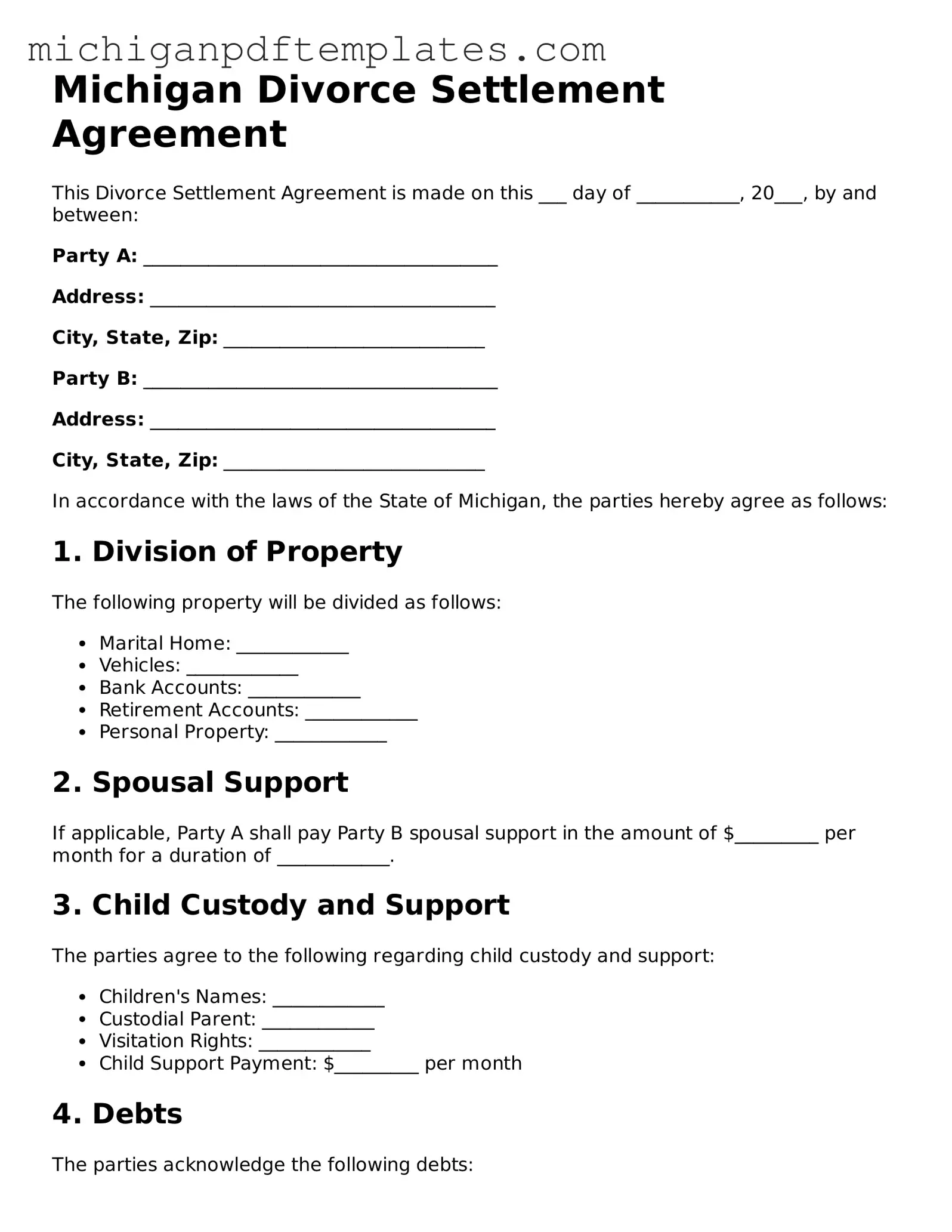Legal Michigan Divorce Settlement Agreement Template
The Michigan Divorce Settlement Agreement form is a legal document that outlines the terms agreed upon by both parties during a divorce. This form addresses various aspects such as asset division, child custody, and support obligations, ensuring that both individuals have a clear understanding of their rights and responsibilities. To start your divorce process smoothly, consider filling out the form by clicking the button below.
Get Your Form Now
